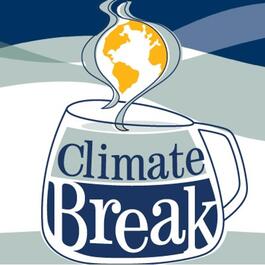
Impacts of Heat Waves on Human Health Across the United States, climate change is increasing the frequency and intensity of heat waves. A heat wave is defined as a persistent period of high temperature days. Although unusually hot days are a natural part of day-to-day variations in weather, heat waves are becoming more common alongside the rapidly accelerating climate crisis. In major cities across the country, the number of heat waves has increased steadily, from two heat waves per year in the 1960s to six per year into the 2010s and 2020s. In the 1960s, the average heat wave was 2.0 degrees above the local 85th percentile threshold, while the average heat wave during the 2020s has been 2.5 degrees above the local threshold. Approximately 210 million Americans, or two thirds of the population, live in counties vulnerable to health threats from high temperatures. As temperatures increase, the number of heat-related illnesses, emergency room visits, and deaths simultaneously increase. As we head further into the 21st century, adaptive measures to protect human health from the effects of extreme heat waves will be necessary in the face of rising climate risk.Protecting yourself during extreme heat Over the past three decades, heat waves have been the leading cause of weather-related fatalities across the nation. In addition to rising heat-related illnesses and deaths, extreme heat can also worsen health outcomes from chronic conditions such as cardiovascular disease, respiratory disease, and acute kidney injury. Extreme temperatures compromise the body’s ability to regulate its internal temperature, resulting in illness, heat cramps, heat exhaustion, heatstroke, and hyperthermia. Individuals living in densely populated cities are extremely vulnerable to the urban heat island effect, which exacerbates high heat temperatures as man made surfaces absorb sunlight during the day and radiate the stored energy at night as heat. Children, the elderly, people experiencing homelessness, low-income communities and individuals with pre-existing health conditions are at the greatest risk to the adverse effects of extreme heat. As temperatures continue to rise, it is necessary that individuals take on adaptive measures to protect themselves from the health risks posed by extreme heat. Action can be taken on both a policy and an individual level. Local governments can take steps to help residents reduce their vulnerability to heat through heat management plans and vulnerability assessments. For example, officials can create early warning systems and urban cooling centers for individuals to find refuge. On an individual scale, when you need to go outside, taking preventive measures such as sun protection, hats, and umbrellas is vital to stay cool. Trying to stay inside as much as possible and finding refuge from the heat will help one avoid the risks of heatstroke. More educational initiatives will be vital in informing individuals on risk factors, symptoms, and treatment steps to keep people safe and informed.Benefits of protecting oneself during extreme heat During periods of extreme heat, it is important to take proper care of yourself in order to mitigate the health effects that result from high temperatures such as dehydration, heat stroke, exhaustion, and slowed cognitive function. Taking extreme heat seriously is vital, as the effects of extreme temperatures can be as serious as sudden events like heart attack or stroke. Prolonged periods of heat and humidity make your body work extra hard to maintain a normal temperature, so taking such precautions is necessary to protect yourself and your loved ones. As extreme heat-related weather events become more common, becoming accustomed to the ways you can keep yourself safe is imperative in a warming world.More progress can be made If we fail to take adaptation measures on both an individual and policy level, we will be unprepared to respond to the impacts of extreme heat. As extreme heat rises in prevalence, more awareness on the ways to respond to increasingly high temperatures can help individuals adapt to such events. Currently, heat is already the weather phenomenon that kills the most people in the United States, so taking care of yourself, family, and neighbors during heat waves is essential to saving lives. For residents who do not have the resources or cooling systems in place to seek protection during a heat wave, the use of cooling centers in cities can provide short-term relief. Important to note, however, is that the increased use of cooling systems will heighten electricity costs due to increasing demand, thereby generating more greenhouse gas emissions from rising power generation. If leaks are to occur, concerns can also arise around the potential release of potent refrigerant gasses, which worsen climate change and damage the ozone layer. This creates a self-perpetuating cycle in that air conditioning is used to treat extreme temperatures, but effectively worsens the climate crisis in doing so. More innovative solutions will be necessary to curtail emissions while keeping individuals safe. Beyond individual actions during times of crisis, cities also need to help their residents respond to rising temperatures in the long-term by redesigning public spaces, planting trees to provide cooling, painting rooftops white to repel sunlight, and incorporating new cooling technologies in buildings and homes. About our guest Dr. David Sklar is an Assistant Dean at the Arizona State University School of Medicine and Advanced Medical Engineering, is a Professor at the ASU College of Health Solutions and works as an emergency physician. Former Editor in Chief of Academic Medicine, Dr. Sklar now works as a senior advisor in health policy and health professions education at ASU Health. Dr. Sklar works to increase awareness on mitigative steps individuals can take to decrease their health risks from extreme heat events.ResourcesIndiana University: Adaptation strategies for extreme heat and public healthNRDC: Climate Change and Health: Extreme HeatEPA: Climate Change Indicators: Heat WavesWHO: Heat and HealthNIH: Temperature-related Death and IllnessFurther ReadingPenn State: Climate-driven extreme heat may make parts of Earth too hot for humansArch Daily:How to Adapt Cities to Extreme HeatWhite House: Planning Tools for Combatting Extreme Heat For a transcript, please visit https://climatebreak.org/staying-safe-in-extreme-heat-with-dr-david-sklar/
From "Climate Break"


Comments
Add comment Feedback